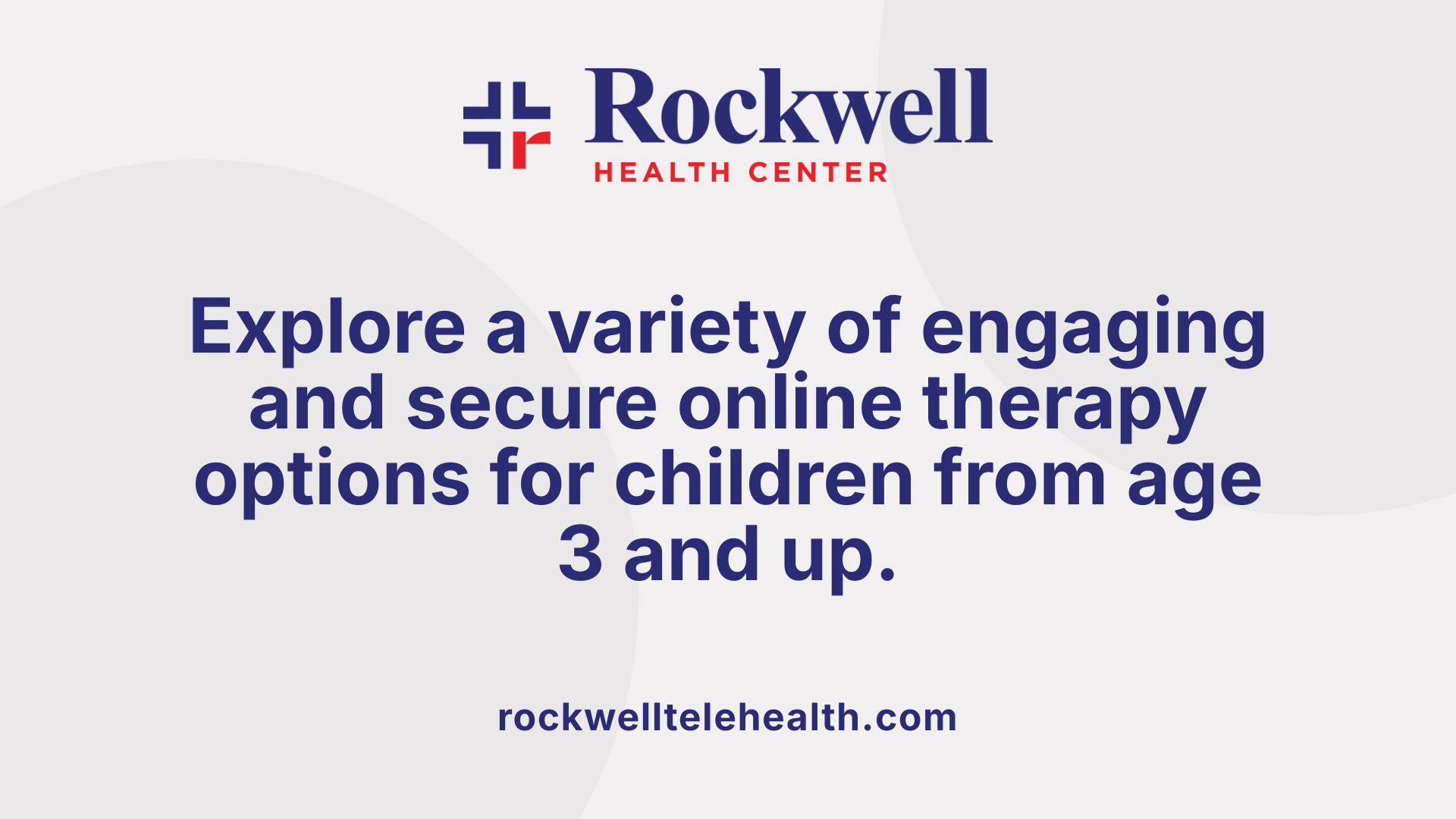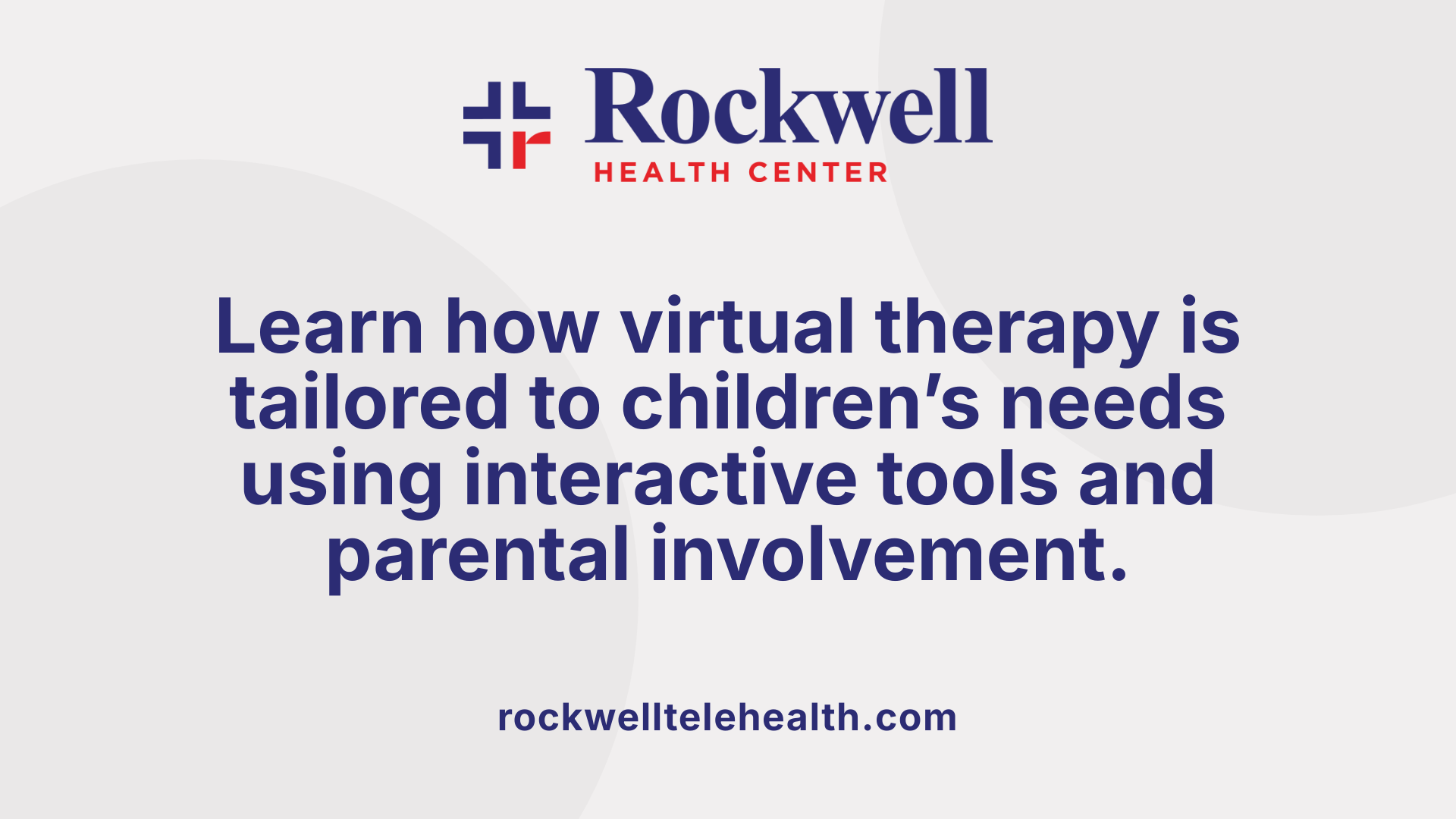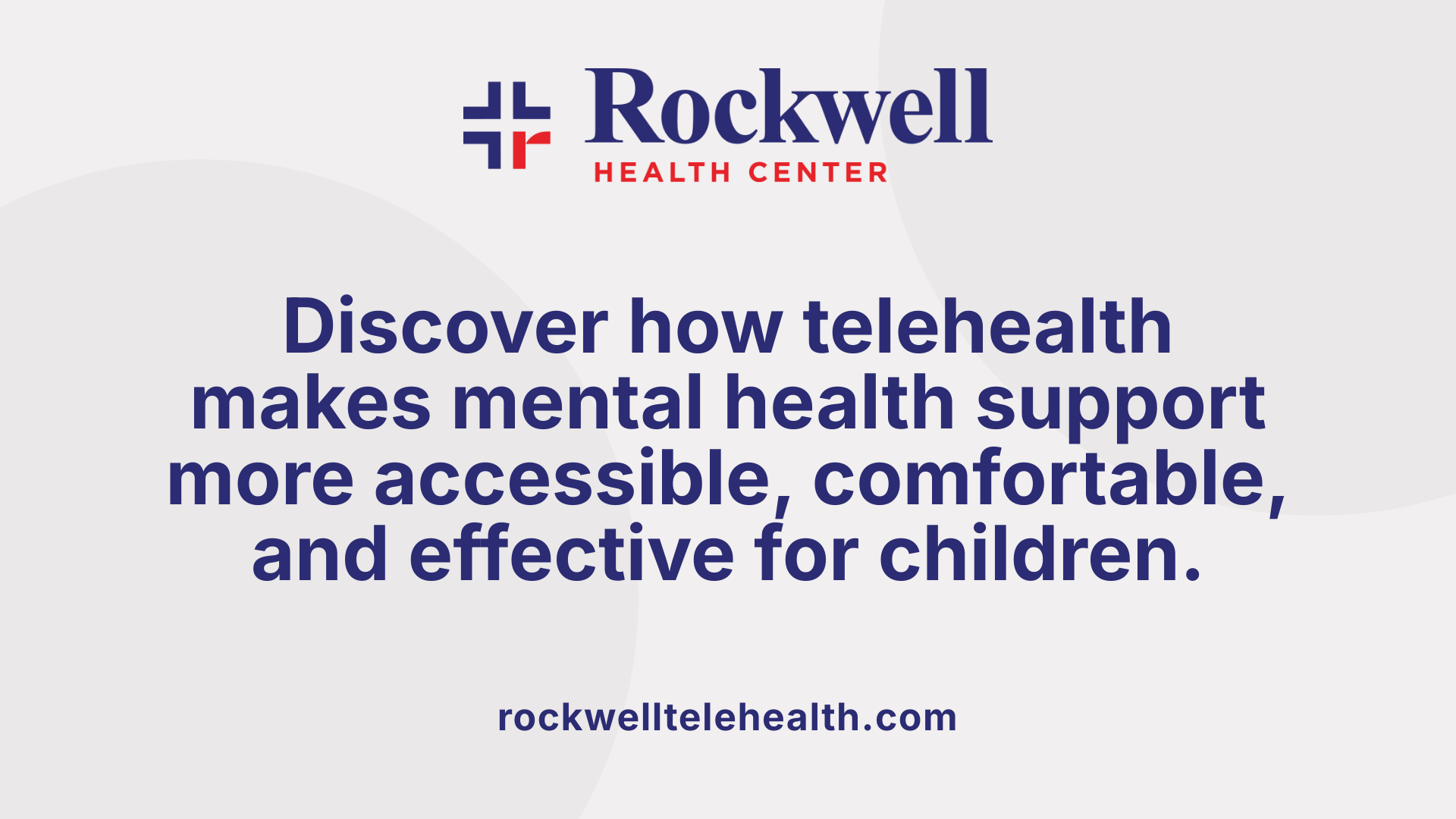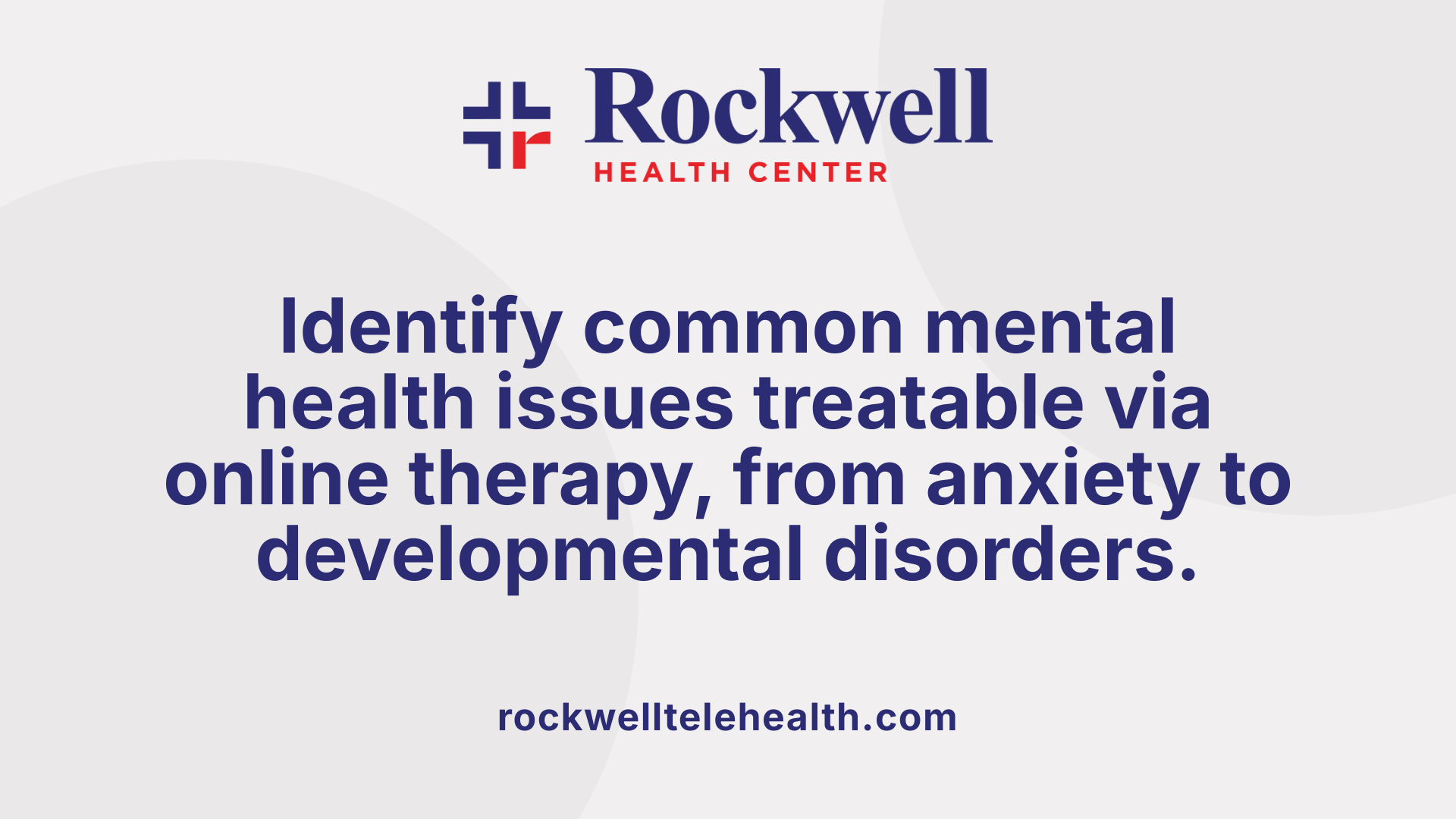Understanding the Growing Role of Virtual Therapy for Children
Remote therapy has become an essential component in delivering mental health services to children with behavioral and emotional challenges. Utilizing innovative technology and evidence-based practices, virtual therapy makes mental health support more accessible, flexible, and tailored to individual needs. This article explores the various online therapy options, processes, benefits, and future directions shaping this evolving field.
Overview of Remote Therapy Options for Children
 Children facing emotional or behavioral challenges can now access a variety of remote therapy services designed to support their mental health from the safety and comfort of home. These platforms typically offer live video sessions, phone calls, and secure messaging platforms, all accessible through the internet. This flexibility helps families fit therapy into busy schedules and eliminates geographical barriers.
Children facing emotional or behavioral challenges can now access a variety of remote therapy services designed to support their mental health from the safety and comfort of home. These platforms typically offer live video sessions, phone calls, and secure messaging platforms, all accessible through the internet. This flexibility helps families fit therapy into busy schedules and eliminates geographical barriers.
Different evidence-based therapies are commonly provided during virtual sessions. Cognitive Behavioral Therapy (CBT) is frequently used to help children recognize and change negative thought patterns. Play therapy and expressive arts therapies offer creative ways for children to express feelings and work through issues in a non-verbal manner. Mindfulness techniques are also incorporated to help children develop coping strategies, while psychodynamic psychotherapy explores underlying emotional conflicts.
Many platforms tailor their offerings to meet the unique needs of each child. Approaches like Child-Centered Play Therapy, where play becomes a vehicle for communication, and family therapy, which involves the entire family unit, are popular. These methods support emotional development, improve communication within families, and build resilience.
Services are available for children as young as 3 years old, with parental permission required for minors. Licensed professionals who specialize in child mental health conduct assessments, psychological testing, and, if necessary, medication management through telehealth. The goal is to provide comprehensive support that can adapt to a child’s developmental stage and family circumstances.
In terms of cost, most services accept insurance, which typically halts around $15 per session when covered by health plans, making therapy more accessible. Many platforms also offer personalized matching to connect families with the right therapist based on their child’s specific needs.
Overall, these remote options make mental health care more reachable for children and their families, improving emotional well-being and resilience through evidence-based practices delivered conveniently online.
The Process of Virtual Child Therapy
 How does virtual therapy for children work and what is its process?
How does virtual therapy for children work and what is its process?
Virtual therapy for children is designed to be convenient, engaging, and tailored to meet the needs of young clients and their families. Typically, sessions are scheduled at regular intervals and conducted through secure video conferencing platforms like Zoom or Doxy.me. These platforms ensure privacy and compliance with health information regulations. During these live sessions, licensed therapists work directly with children, employing a variety of age-appropriate and interactive methods to establish a trusting therapeutic environment.
The process often begins with an initial assessment where the therapist gathers information about the child's emotional state, behavioral concerns, and family dynamics. This stage helps set personalized goals for therapy. Following assessment, ongoing sessions may incorporate different techniques, such as talking through issues, play therapy, or digital tools that make therapy more engaging.
To enhance the experience, therapists frequently use multimedia resources, apps, and gamification strategies that align with children’s interests. These tools help children understand and manage their feelings, develop coping skills, and stay motivated throughout therapy. Parental involvement is essential, as parents can support the child's progress, help facilitate participation, and provide insights to therapists—all while respecting the child's privacy.
Throughout treatment, therapists continuously monitor progress by evaluating behavioral changes, emotional improvements, and achievement of goals. They adjust strategies or incorporate new tools as needed. Overall, this integrated approach ensures that children receive effective mental health support in a familiar, home-based setting, making therapy more accessible and less intimidating.
Benefits and Effectiveness of Telehealth for Children

What are the benefits and effectiveness of telehealth therapy for children?
Telehealth therapy has become an increasingly popular way to support children’s mental health. One of its main advantages is increased access, particularly for those living in remote or underserved areas where in-person services may be limited. This technology can bridge geographical gaps, making mental health support more equitable.
The convenience and flexibility of virtual sessions also stand out. Families can schedule appointments more easily around their busy routines, eliminating the need for travel and reducing waiting times. This flexibility often leads to better adherence to treatment plans and more consistent care.
Children tend to feel more at ease in their familiar environment—home—during virtual therapy sessions. Being in a comfortable setting can help children relax and open up more readily, fostering a more productive therapy experience. Additionally, therapists can observe children in their natural surroundings, providing valuable insights into family dynamics, routines, and environmental factors that influence mental health.
Research supports the effectiveness of online therapy, showing that it can be as beneficial as traditional in-person treatments. Specifically, studies indicate positive outcomes for children dealing with anxiety, depression, ADHD, and trauma. In many cases, engagement levels are higher as children find the virtual format more accessible and less intimidating.
Overall, telehealth expands the reach and quality of mental health services for children. It ensures that support is not only more accessible and flexible but also tailored to the child's comfort and specific needs, leading to better engagement and outcomes for young patients.
Treatable Conditions and Issues Through Remote Therapy

What conditions and issues can be treated through remote child therapy?
Online child therapy offers a versatile approach to addressing many mental health concerns in children and adolescents. Common conditions that can be effectively managed through teletherapy include anxiety, depression, traumatic experiences, and post-traumatic stress disorder (PTSD).
Children facing attachment issues or exhibiting behavioral problems also benefit from remote therapy sessions that employ techniques such as cognitive-behavioral therapy (CBT) and eye movement desensitization and reprocessing (EMDR). Such modalities help children develop healthier emotional regulation and coping skills.
Developmental disorders like autism spectrum condition (ASC) are also within the scope of online therapy. Digital formats can reduce sensory overload and tailor interactions to individual needs, making engagement easier for children with ASC.
Moreover, remote therapy provides a comfortable and anonymous environment that can reduce social stress, such as bullying or peer pressure, and offer support during grief or school-related stress.
It is important to note that while online therapy is practical for many mental health issues, it might not be suitable for severe conditions that require close supervision. These include suicidal ideation, psychosis, or eating disorders, where in-person emergency management may be necessary.
The decision to pursue remote therapy depends on various factors, including the child's specific needs, age, and the severity of symptoms. Parental involvement typically enhances therapeutic outcomes, ensuring safety and consistency.
| Condition or Issue | Suitability in Remote Therapy | Effective Approaches | Special Considerations |
|---|---|---|---|
| Anxiety & Depression | Very suitable | CBT, Mindfulness | Ongoing monitoring needed |
| Trauma & PTSD | Highly effective | EMDR, Trauma-focused CBT | Some cases may need in-person backup |
| Attachment & Behavioral Issues | Suitable | Play therapy, CBT | Parental involvement crucial |
| Developmental Disorders | Beneficial | Customized interactive techniques | Sensory sensitivities considered |
| Social Stress & Grief | Very beneficial | Supportive counseling | Comfort in home environment |
| Severe Conditions (Suicidal ideation, psychosis, eating disorders) | Limited suitability | Emergency intervention required | Often requires in-person care |
Overall, remote child therapy with evidence-based methodologies offers an accessible, effective, and adaptable way to support children through various mental health challenges, emphasizing that the level of intervention should always match the child's specific condition and needs.
Age Range and Suitability for Remote Therapy

What is the appropriate age range for online therapy services?
Online therapy services are generally suitable for children starting from around age 3 or 4, depending on their developmental stage and individual needs. Many platforms specify that their services cater to children from ages 4 to 17, enabling access to a broad pediatric age group.
For very young children, such as those as young as three, approaches like Child-Centered Play Therapy are often employed. Play therapy is specifically designed to facilitate emotional expression and engagement through the child's natural mode of communication—play. This makes it easier for younger kids to communicate feelings and experiences that they may not yet have the language to articulate.
As children grow older, online therapy can be adapted to their developmental level. For early to middle childhood, interventions focus on age-appropriate techniques like cognitive behavioral therapy (CBT) and expressive therapies, which assist in developing coping skills and emotional regulation.
Older children and teenagers often face different challenges such as anxiety, depression, or behavioral issues. For this group, therapy sessions are tailored to their developmental maturity, focusing on issues relevant to adolescence like peer relationships, academic pressures, or identity development.
Overall, the suitability of online therapy depends on individual maturity and specific needs. While most services serve children from early childhood through adolescence, the choice of modality and intervention is adjusted according to age and developmental stage.
This flexible approach ensures that children can access timely mental health support from the earliest age at which they can benefit, with therapy methods adapted for maximum comfort and effectiveness.
Selecting the Right Remote Mental Health Service
Choosing an appropriate online therapy service for a child involves several important considerations. Parents and guardians should look for providers with specialized training and significant experience in pediatric mental health. This includes expertise in dealing with common childhood conditions such as anxiety, ADHD, or depression, and familiarity with child-centered approaches like play therapy or cognitive-behavioral therapy (CBT).
Security and confidentiality are vital. Parents should verify that the platform uses secure, encrypted technology to protect the child's privacy during sessions. Additionally, confirming that the service accepts insurance can help manage costs effectively, making therapy more accessible. Many services partner with major insurance providers, which can lead to lower out-of-pocket expenses, often around $15 per session when covered by insurance.
Evaluating the credibility of a provider also involves checking reviews, testimonials, and clinical evaluations. Many platforms feature feedback from other parents and clinician credentials, ensuring that the selected therapist is licensed and qualified. It’s beneficial to start with a trial session to see if the child feels comfortable and the approach suits their needs.
Flexibility is another critical factor. Choose a service that offers scheduling options accommodating busy families and provides access to therapy from any location. Family involvement is often encouraged and can be facilitated through family sessions or collaborative treatment planning.
Cultural considerations, such as multilingual therapists or culturally sensitive approaches, further enhance the therapy’s relevance and effectiveness. Suitability depends on matching the child’s unique needs with a provider’s expertise, flexibility, and values.
Overall, parents should prioritize a service that combines proven clinical approaches, emotional safety, affordable costs, and convenient access. Thorough research, trial sessions, and consulting trusted sources can help find a therapy platform that best supports the child's mental health journey.
Design Considerations and Future Directions in Digital Child Mental Health Interventions
What are future directions and important considerations in the design of digital mental health interventions for children?
The future of digital mental health tools for children is poised for significant growth and innovation. Developers are focusing on creating more engaging, age-appropriate, and culturally sensitive resources. Incorporating gamification, virtual reality (VR), and artificial intelligence (AI) helps personalize therapy and keeps children engaged.
By integrating these technologies with traditional therapy methods, providers can offer more comprehensive support. For example, AI can help tailor interventions to a child's specific needs, while VR can simulate real-world scenarios for practice and learning.
Real-time data analysis, digital phenotyping, and remote monitoring are advancing quickly. These tools enable early detection of issues such as anxiety or depression and facilitate immediate intervention, often before symptoms worsen.
Ethical considerations remain paramount. Ensuring privacy, security, and safety when dealing with children’s sensitive information is critical. Developing standards and accreditation frameworks, like TEQUILA, guides responsible innovation and assures users of quality and safety.
Expanding access is also a priority. Digital interventions have the potential to reach underserved populations—including children in rural areas, those with neurodivergence, and socioeconomically disadvantaged groups. Efforts to make these tools affordable and available on multiple devices will help reduce disparities.
Research is fundamental to progress. Future studies should examine the long-term impact of digital therapies, including their effectiveness in sustaining improvements and preventing relapse. Training practitioners to effectively use these new tools and conducting rigorous validation studies will ensure these interventions are both effective and sustainable.
Overall, thoughtful, ethical, and inclusive design combined with technological innovation can transform pediatric mental health care, making support accessible and effective for children everywhere.
Final Thoughts: Embracing Innovation and Ensuring Quality in Child Teletherapy
Remote therapy for children continues to evolve, offering promising avenues for accessible, effective, and engaging mental health care. Advances in technology and a focus on evidence-based practices ensure that virtual interventions are not only convenient but also impactful. As the field progresses, attention to ethical considerations, cultural relevance, and long-term outcomes will be paramount in shaping a future where every child can access tailored mental health support from the safety of their home.
References
- Online Therapy and Counseling for Children
- Virtual Visit Behavioral Health for Kids
- The 6 Best Online Therapy Services for Kids
- The 8 Best Online Therapy Services for Kids
- Little Otter | Mental Health Services for the Whole Family
- Online Treatment and Virtual Therapists in Child ...
- Healthy Young Minds - Online Therapy for Children & Teens
- The 8 Best Online Therapy Services for Kids
























































































.png)